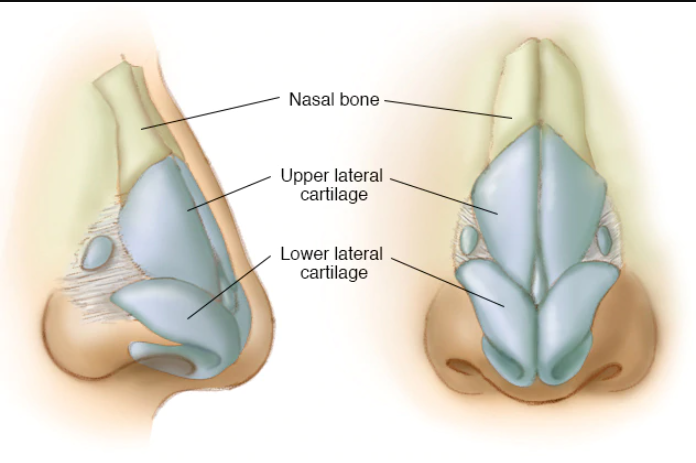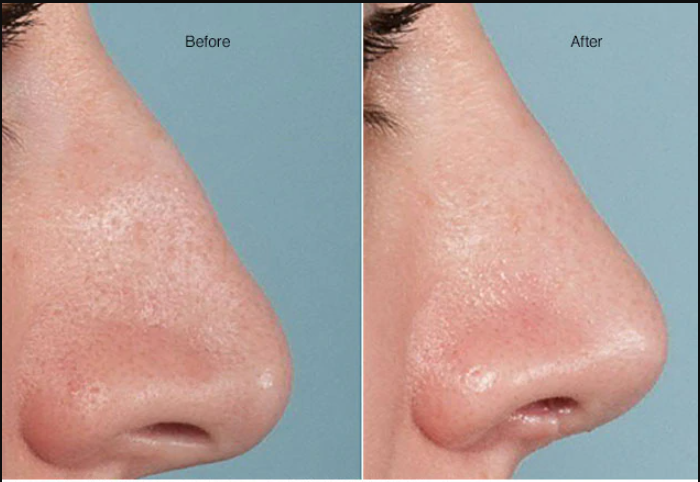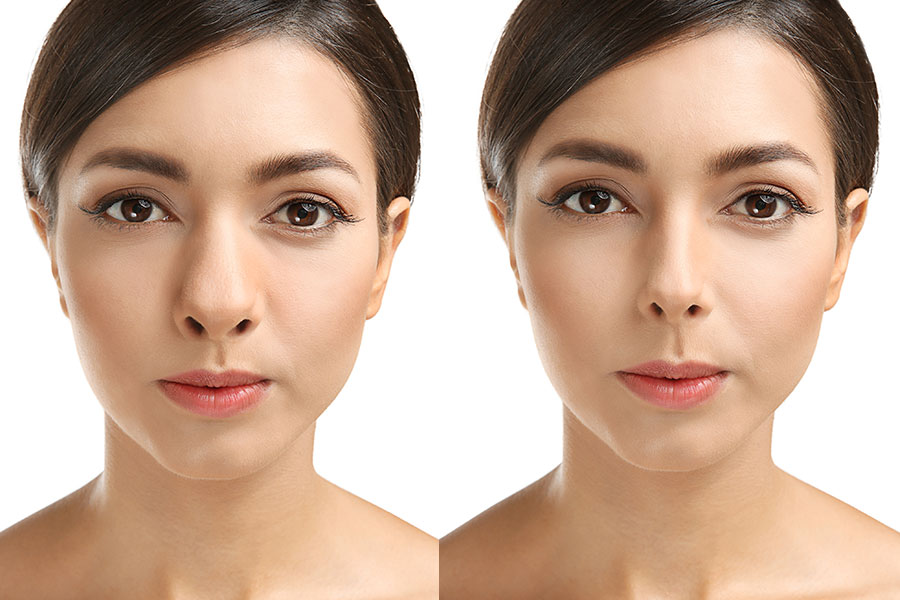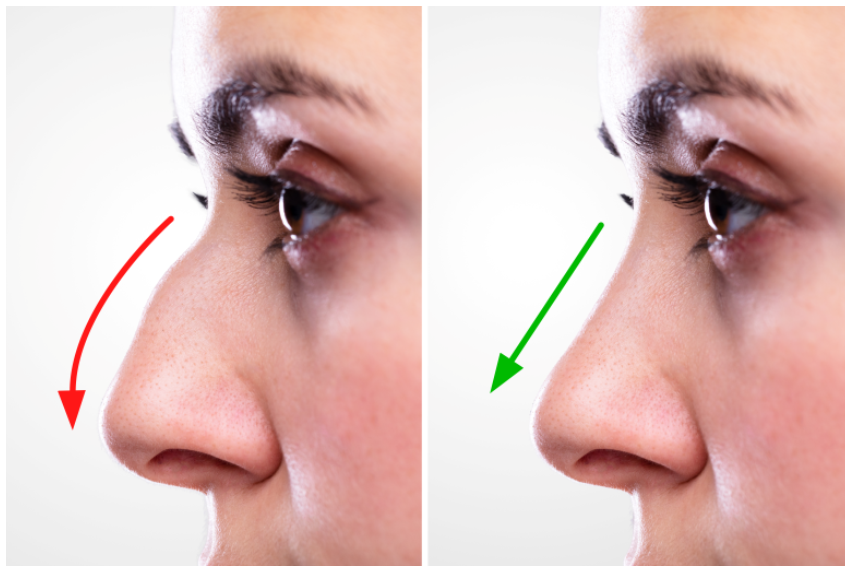Rhinoplasty, commonly known as a nose job, is a plastic surgery procedure for altering and reconstructing the nose. There are two types of plastic surgery used– reconstructive surgery that restores the form and functions of the nose and cosmetic surgery that changes the appearance of the nose. Reconstructive surgery seeks to resolve nasal injuries caused by various traumas including blunt, and penetrating trauma and trauma caused by blast injury. Reconstructive surgery also treats birth defects, breathing problems, and failed primary rhinoplasties. Rhinoplasty may remove a bump, narrow nostril width, change the angle between the nose and the mouth, or address injuries, birth defects, or other problems that affect breathing, such as a deviated nasal septum or a sinus condition.
WHAT IS RHINOPLASTY?
Rhinoplasty (RIE-no-plas-tee) is surgery that changes the shape of the nose. The motivation for rhinoplasty may be to change the appearance of the nose, improve breathing or both.
The upper portion of the structure of the nose is bone, and the lower portion is cartilage. Rhinoplasty can change bone, cartilage, skin or all three. Talk with your surgeon about whether rhinoplasty is appropriate for you and what it can achieve.
When planning rhinoplasty, your surgeon will consider your other facial features, the skin on your nose and what you would like to change. If you're a candidate for surgery, your surgeon will develop a customized plan for you.
WHAT TO EXPECT?
Rhinoplasty does not have an ordered series of steps. Each surgery is unique and customized for the specific anatomy and goals of the person having the surgery. Rhinoplasty can change the size, shape or proportions of your nose. It may be done to repair deformities from an injury, correct a birth defect or improve some breathing difficulties.
WHO IS IT FOR?
People get rhinoplasty to repair their nose after an injury, to correct breathing problems or a birth defect, or because they're unhappy with the appearance of their nose. Possible changes that your surgeon can make to your nose through rhinoplasty include: a change in size. a change in angle.
HOW IS IT PERFORMED?
Rhinoplasty can be done in a hospital, a doctor’s office, or an outpatient surgical facility. Your doctor will use local or general anesthesia. If it’s a simple procedure, you’ll receive local anesthesia to your nose, which will also numb your face. You may also get medication through an IV line that makes you groggy, but you’ll still be awake.
Once you’re numb or unconscious, your surgeon will make cuts between or inside your nostrils. They’ll separate your skin from your cartilage or bone and then start the reshaping. If your new nose needs a small amount of additional cartilage, your doctor may remove some from your ear or deep inside your nose. If more is needed, you might get an implant or a bone graft. A bone graft is additional bone that’s added to the bone in your nose. The procedure usually takes between one and two hours. If the surgery is complex, it can take longer.
WHAT POSTOPERATIVE CARE IS REQUIRED?
After the surgery you need to rest in bed with your head raised higher than your chest, to reduce bleeding and swelling. Your nose may be congested because of swelling or from the splints placed inside your nose during surgery.
Slight bleeding and drainage of mucus and old blood are common for a few days after the surgery or after removing the dressing. Your doctor may place a "drip pad"— a small piece of gauze held in place with tape— under your nose to absorb drainage. Change the gauze as directed by your doctor. Don't place the drip pad tight against your nose.
RISK AND COMPLICATIONS
As with any major surgery, rhinoplasty carries risks such as: Bleeding, Infection, An adverse reaction to the anesthesia Other possible risks specific to rhinoplasty include but are not limited to: Difficulty breathing through your nose, Permanent numbness in and around your nose, The possibility of an uneven-looking nose, Pain, discoloration or swelling that may persist, Scarring, A hole in the septum (septal perforation), A need for additional surgery
RESULTS
Very slight changes to the structure of your nose— often measured in millimeters— can make a large difference in how your nose looks. Most of the time, an experienced surgeon can get results both of you are satisfied with. But in some cases, the slight changes aren't enough, and you and your surgeon might decide to do a second surgery for further changes. If this is the case, you must wait at least a year for the follow-up surgery, because your nose can go through changes during this time.
© Copyright 2021 All Rights Reserved




